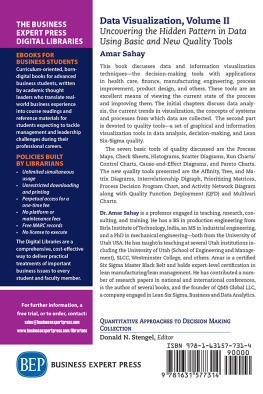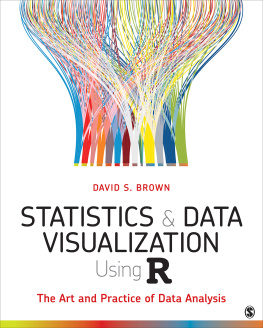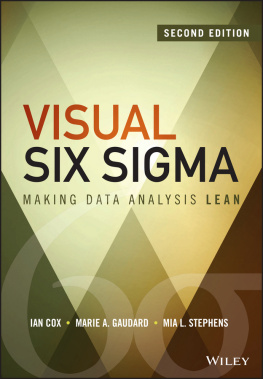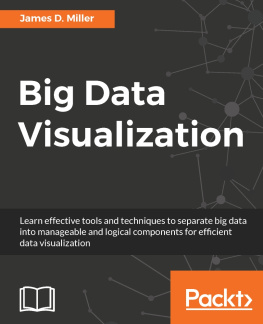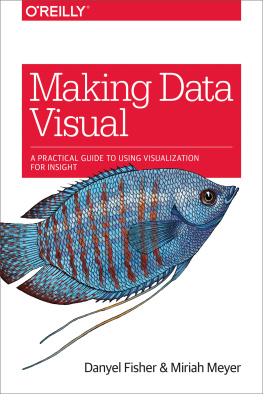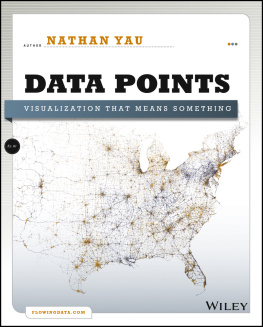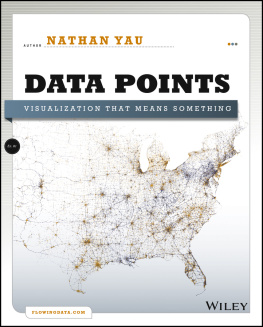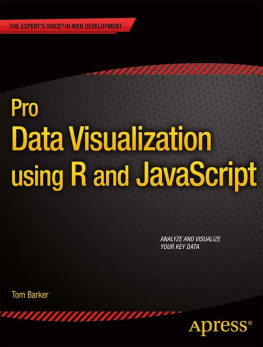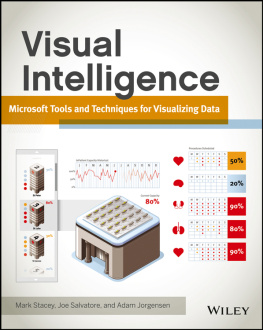Data Visualization,
Volume II
Data Visualization,
Volume II
Uncovering the Hidden Pattern in Data Using Basic and New Quality Tools
Amar Sahay

Data Visualization, Volume II: Uncovering the Hidden Pattern in Data Using Basic and New Quality Tools
Copyright Business Expert Press, LLC, 2017.
All rights reserved. No part of this publication may be reproduced, stored in a retrieval system, or transmitted in any form or by any meanselectronic, mechanical, photocopy, recording, or any other except for brief quotations, not to exceed 250 words, without the prior permission of the publisher.
First published in 2017 by
Business Expert Press, LLC
222 East 46th Street, New York, NY 10017
www.businessexpertpress.com
ISBN-13: 978-1-63157-731-4 (paperback)
ISBN-13: 978-1-63157-732-1 (e-book)
Business Expert Press Quantitative Approaches to Decision Making Collection
Collection ISSN: 2163-9515 (print)
Collection ISSN: 2163-9582 (electronic)
Cover and interior design by S4Carlisle Publishing Services Private Ltd., Chennai, India
First edition: 2017
10 9 8 7 6 5 4 3 2 1
Abstract
The focus of this book is on data visualization and information visualization toolstwo major categories of data visualization. The first part discusses the concepts and applications related to data analysis, visualization, and the current trend in data visualization. A discussion of systems and processes is provided as all data are collected from systems and processes. A section emphasizes the importance of variation in data analysis since almost all data show variation and the visual tools are an excellent way to study, analyze, and reduce the variation in the processes. Applications illustrate how the visual tools are an excellent means of viewing the current state of the process and provide the opportunities for improvement. The second part of the book is devoted to quality tools , a set of graphical and information visualization tools in data analysis, decision making, and Lean Six Sigma quality programs. The key application areas of visual tools including the business process improvement, business data analysis, health care, finance, manufacturing engineering, process improvement, and product and process design are discussed. The two categories of visualization tools seven basic tools and seven new tools of quality are discussed with their applications. The basic quality tools are Process Maps, Check Sheets, Histograms, Scatter Diagrams, Run Charts, Control Charts, Cause-and-Effect (Ishikawa) Diagrams, and Pareto Charts/Analysis. The seven new tools of qualitya set of visuals used to solve quality problems using graphical and analytical techniquesinclude the Affinity Diagram, Interrelationship Digraph, Tree Diagram, Prioritizing Matrices, Matrix Diagram, Process Decision Program Chart, and Activity Network Diagram. Other information processing tools, such as QFDthe quality function deployment/house of qualityand multivari charts, are discussed using commonly used software.
Keywords
big data, business intelligence, charts and graphs, data, data visualization, information visualization, quality tools, seven basic tools of quality, seven new tools of quality, visual representation
Contents
The purpose of this book is to introduce the graphical tools and information visualization tools widely used in data analysis, visualization, and quality improvement to analyze, enhance, and improve the quality of products and services. Visual tools are an easy way to gain a first look at your data and they have been used to gain an insight into the data before applying more complex analysis. The book provides a collection of visuals and graphical tools. The visual tools are commonly referred to as graphical tools. A number of charts and graphs are commonly used to create visuals that provide a quick summary, trends, and patterns in the data which are not usually apparent from the data in raw form.
The first part of the book presents background information and the fundamental concepts relating to data visualization. The following concepts are covered in the first part:
Overview and Data Visualization
Data and Data Analysis Concepts
Systems Processes and Variation
Current Trends in Data Visualization
Data Visualization Concepts and Applications
The second part of the book is devoted to quality tools. These are a set of graphical and information visualization tools that have been developed and used over the years in quality improvement and Lean Six Sigma programs. The use of these data visualization and quality tools is not limited to quality programs. The key areas where these tools are applied include business process improvement, business data analysis, health care, finance, manufacturing, engineering process improvement, and product and process design, to name a few. These visual tools are powerful decision-making tools.
The quality tools in this text represent data visually that enable the analyst to immediately see the important features and characteristics of data. The graphs and charts provide the current state of the process and can also show the opportunities for improvement.
Some of the visual displays, for example, flow diagrams and value stream mapping, have been successfully used in studying, developing, and improving business and engineering processes. They also help to redesign more efficient processes. Besides improving the process design, many specially designed graphs and charts are used in product and process design and improvement. In many cases, these visual tools provide an idea about the variation in the process that allows the opportunity for reducing variation. Variation reduction is one of the major goals of process improvement and quality improvement. In many cases, the visual tools also help reveal the waste in the process. These graphical tools are critical in identifying waste and variation in any process. All processesservice or manufacturinghave two things in commonwaste and variation. Minimizing and eliminating wastes and defects leads to a lean and defect-free process with enhanced quality. Waste and variation reduction also can significantly reduce the cost of poor quality. The quality tools in this book are problem-solving and decision-making tools that can be applied to improve the product and service quality. The data and information visualization tools discussed in this book have been successfully applied to:
improve product and service quality,
reduce operating cost,
increase sales and revenue,
reduce cycle time,
increase reliability,
incorporate innovation in products and services,
increase productivity and profitability,
reduce the variation in the processes, and
meet or exceed customer expectations.
Many of these problems can be solved using graphical and information visualization tools leading to product and service excellence. The following are the highlights and the areas this book discusses:
Data and data analysis concepts
Data and information visualization
Data visualization with big data
Seven basic tools of qualitygraphical techniques used to detect and solve problems
The seven new tools of qualitya set of visuals used to solve quality problems using graphical and analytical techniques
A set of useful tools in quality improvement and Lean Six Sigma that we refer tobeyond the basic and new tools of quality
Information processing toolsFlow diagrams, Process Flow diagrams, SIPOC (supplier, input, process, output, and customer) diagrams, VSM (value stream mapping), and QFD (quality function deployment/house of quality matrix).

